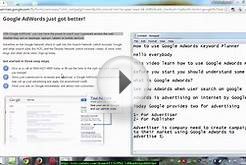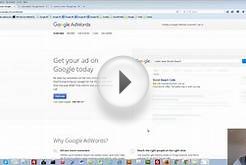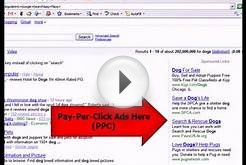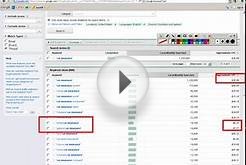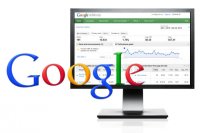 What if you built a website and nobody came? Simple answer: Start an ad campaign using Google AdWords. AdWords is a daunting and complex system, but it really isn't that difficult to start using. Even with a budget of a dollar a day, the service is worth trying to see if you can generate traffic to your site.
What if you built a website and nobody came? Simple answer: Start an ad campaign using Google AdWords. AdWords is a daunting and complex system, but it really isn't that difficult to start using. Even with a budget of a dollar a day, the service is worth trying to see if you can generate traffic to your site.
Setting Up Your Account
As with all things in the Googleverse, first you'll set up an account with Google. However, you don't need a standard Google user account. Once you click on the AdWords home page, you'll be prompted for a regular Google account or will get the option to set up a new one exclusively for advertising. You'll also see a toll-free number you can call if you prefer to set things up offline.
Setup is straightforward and self-explanatory; just have a credit card handy to pay for your ads. After you verify your account, you're ready to start creating your ad.
You can use a Google account exclusively for your ad campaigns.Starting a Campaign
Google's taxonomy for AdWords may not be obvious to first-time users, so here's the fundamental thing to know: Your ads are segregated into Campaigns, each of which can have multiple Ad Groups in it. Each Ad Group can contain multiple keywords and multiple ads. In general, unless your ad needs are very complicated, it's a good idea to keep the number of Ad Groups small (that is, just one) for each Campaign at first. However, if you want to run multiple ads to experiment with how different phrases perform, use multiple Ad Groups.
 Get started by clicking the Campaign tab, then the green New Campaign button. You'll choose whether to direct your ads to Search networks (to users who search on Google directly), Display networks (to third parties using AdSense on their websites), or both. The last option offers the most exposure, but the Search networks option alone arguably can better target users actively searching for your keywords.
Get started by clicking the Campaign tab, then the green New Campaign button. You'll choose whether to direct your ads to Search networks (to users who search on Google directly), Display networks (to third parties using AdSense on their websites), or both. The last option offers the most exposure, but the Search networks option alone arguably can better target users actively searching for your keywords.
Setting a Budget
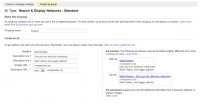 Near the bottom of the New Campaign screen you'll set up your budget. This is one of the trickiest parts of using AdWords successfully, and it merits special discussion.
Near the bottom of the New Campaign screen you'll set up your budget. This is one of the trickiest parts of using AdWords successfully, and it merits special discussion.
Your budget for a Campaign has two components: The Bid and the overall Budget per Day. The Bid (described as the "Default Bid") is how much you will pay for one click of your ad. Bid 25 cents—a safe number—and you pay a quarter every time someone clicks on your ad.
This can be dangerous, of course, if your ad is popular, so Google gives you a way to stop the spending if things get crazy. Budget per Day sets the maximum you're willing to spend on 24 hours of ads. After you get enough clicks to hit that level, Google no longer displays your ad until the next day. In this example, if you set your budget at $1, your ad will stop displaying after four clicks.
These numbers are closely related and heavily dependent on your business, so consider them carefully. Start with your budget. It's easier to think of this number monthly or even annually. Just do the math. If you have $1000 a year to spend on AdWords, your daily budget should be about $2.75.
Tweak your keywords by viewing related terms that get attention in Google searches.Now, how many clicks do you expect to get during a day? If you're a consultant looking for high-dollar clients, you may expect minimal traffic to your site, but be willing to pay a lot for each lead, so use a higher number for your Default Bid. But if you're selling widgets at 99 cents a pop, you probably can't support a per-click rate of more than a few cents.
Finally, remember that AdWords really is more of an auction than a retail store. When you bid for keywords, you're doing exactly that. Other businesses will be bidding for the same keywords, and Google determines how they are displayed based on who is paying the most. Bidding a lot to be #1 can require bids of well over a dollar in most cases. Otherwise, you'll be relegated to lower-performing places or your ad won't show at all—at least not until the top advertisers' daily budgets have run out.

